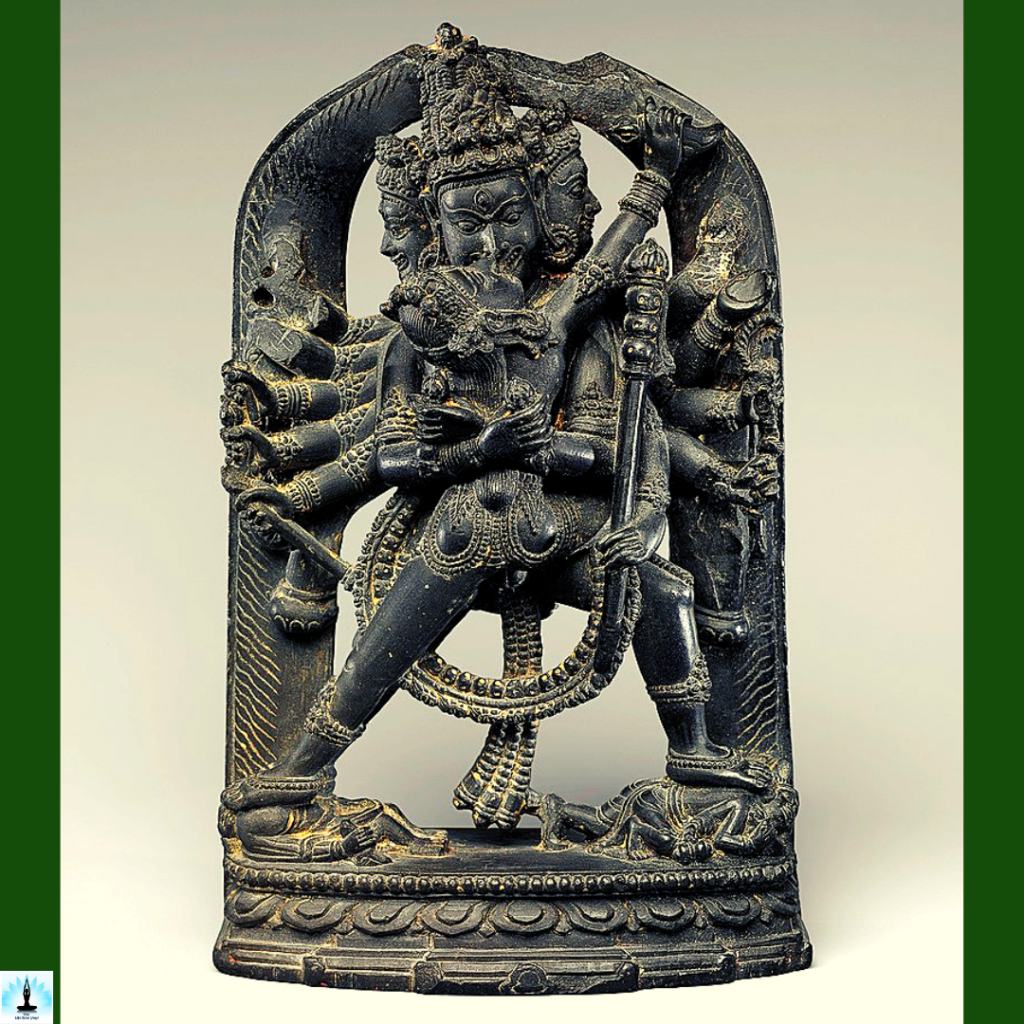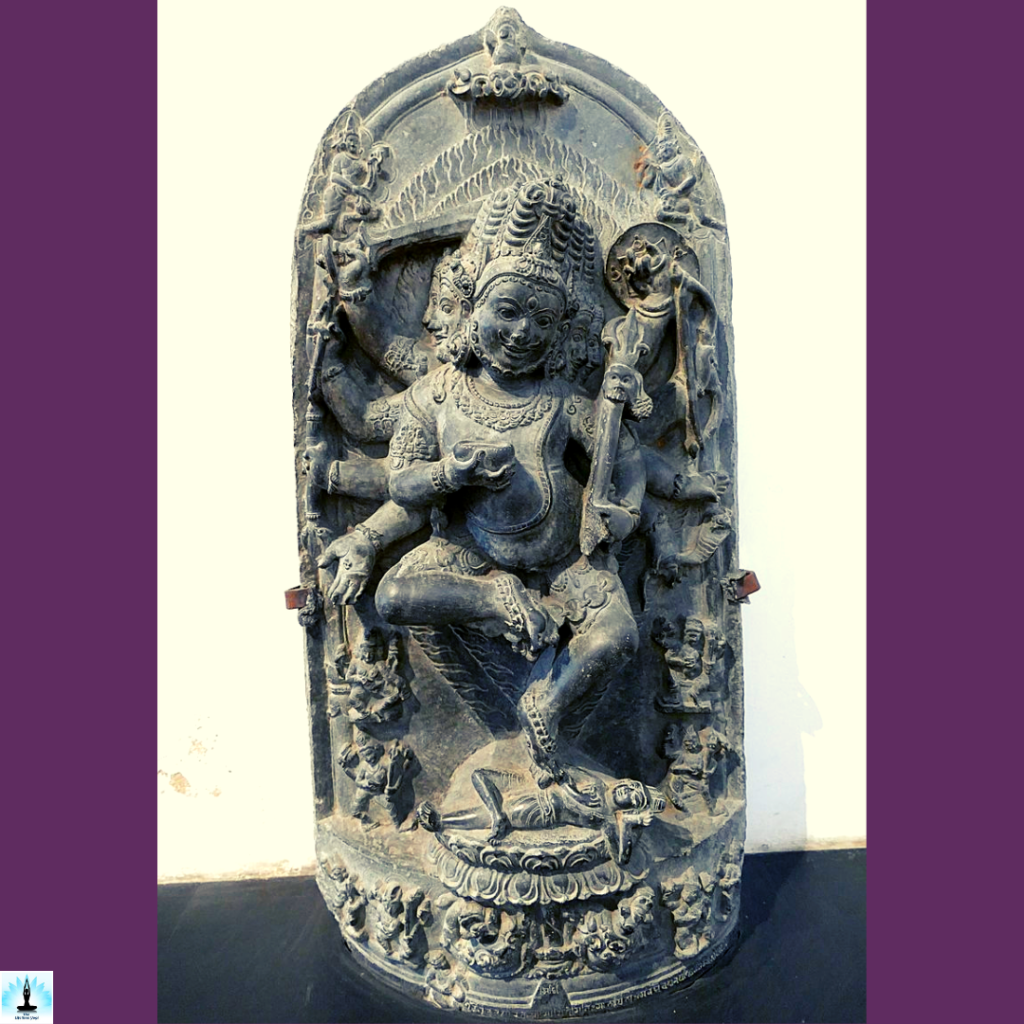Introduction – Top 11 QnA on Tantra Sadhana and Procedure and Process for Doing Tantra Sadhana
Tantra Sadhana is a spiritual practice rooted in the ancient Indian tradition of Tantra, which encompasses a diverse range of practices aimed at expanding consciousness and connecting with the divine. The term “Sadhana” refers to a disciplined and dedicated spiritual practice, and when combined with Tantra, it becomes a transformative journey toward self-realization.

Table of Contents
What Is the Procedure and Process for Doing Tantra Sadhana?
Practicing Tantra Sadhana involves a disciplined and mindful approach, as it delves into spiritual exploration and self-realization.
Tantra Sadhana is a personal journey, and the practices may vary among individuals and traditions. Approach it with sincerity, reverence, and an open heart, allowing the transformative power of Tantra to unfold in your life.
Here’s a practical guide to help you initiate and sustain your journey in Tantra Sadhana:
1. Seek Guidance – Begin by seeking guidance from an experienced Tantra teacher or Guru. Guru who is a knowledgeable guide can provide insights, correct techniques, and help interpret your experiences along the path.
2. Set Intentions – Clearly define your intentions for engaging in Tantra Sadhana. Whether it’s self-realization, spiritual growth, or a specific goal, having a clear purpose will guide your practices.
3. Establish a Sacred Space – Create a dedicated and serene space for your Sadhana. This space can be a room, a corner, or even an outdoor spot where you feel a sense of tranquility and connection.
4. Incorporate Rituals – Rituals are integral to Tantra Sadhana. Include practices like lighting candles, using sacred symbols, and chanting mantras. These rituals help create a focused and sacred atmosphere.
5. Mantras and Chanting – Integrate mantra chanting into your daily routine. Choose relevant mantras that resonate with your spiritual goals. Regular chanting can purify the mind and align your energies.
6. Meditation Practices – Embrace meditation as a cornerstone of Tantra Sadhana. Explore various meditation techniques, focusing on the breath, visualization, or the repetition of specific sounds to quiet the mind and deepen your awareness.
7. Yantra Meditation – Work with Yantras, geometric symbols representing cosmic energies. Meditating on Yantras can facilitate a connection with higher states of consciousness.
8. Honor the Divine Feminine and Masculine – Tantra acknowledges the divine interplay of Shiva (masculine) and Shakti (feminine). Embrace practices that honor and balance these energies within yourself, fostering inner harmony.
9. Be Patient and Consistent – Tantra Sadhana is a gradual process. Be patient with yourself, and stay consistent in your practices. The transformative effects often unfold over time.
What Are the Key Elements of Tantra Sadhana?

- Sacred Rituals and Ceremonies – Tantra Sadhana regularly involves elaborate rituals and ceremonies conducted with precision and reverence. These rituals may include the use of sacred symbols, mantras, and specific gestures to invoke spiritual energies.
- Mantra and Meditation – Chanting of mantras, or sacred sounds, is a common aspect of Tantra Sadhana. Meditation plays a central role, allowing practitioners to go beyond the surface of the mind and access deeper states of consciousness.
- Yantras and Symbols – The use of Yantras (geometric symbols) is prevalent in Tantra Sadhana. These symbols are believed to represent cosmic energies, and their meditation is thought to bring about profound spiritual insights.
- Energy Work (Kundalini) – Tantra Sadhana often involves the awakening and channeling of Kundalini energy – a potent, dormant force believed to reside at the base of the spine. Practices aim to guide this energy through the energy centers (chakras) to attain higher states of awareness.
- Guru-Shishya (Teacher-Disciple) Relationship – In the traditional Tantric path, guidance from an experienced teacher (Guru) is considered essential. The Guru imparts knowledge, guides the practitioner through practices, and helps interpret the experiences encountered on the spiritual journey.
What are the Goals of Tantra Sadhana?
- Self-Realization: Tantra Sadhana seeks to go beyond the limitations of the ego and realize the true nature of the self.
- Union with the Divine: Practitioners aspire to connect with the divine, understanding that divinity resides both within and beyond the individual.
- Harmony of Energies: The practice aims to harmonize the masculine and feminine energies within oneself, symbolized as Shiva and Shakti, fostering balance and completeness.
- Expansion of Consciousness: Tantra Sadhana is a pathway to expanding consciousness, transcending dualities, and experiencing the unity underlying all of creation.
Is It Safe to Do Tantra Sadhana at Home?
It is always better to practice tantra sadhana and related procedure in Gurugriha (In Gurus Place) or places away from people’s presence or lone place. But it is safe in home also provided you are not practicing some occult activity or ominous doing or harmful practices.
- Engaging in Tantra Sadhana at home can be safe and fulfilling only when approached with care and mindfulness. Starting with initial practices and seeking guidance from Guru can provide a proper context for your journey.
- Create a dedicated and tranquil space within your home for these practices, fostering an environment conducive to spiritual exploration. Adapting practices to your comfort level and progressing gradually ensures a harmonious integration of Tantra Sadhana into your daily life.
- While the transformative benefits can be profound, it’s essential to be mindful of individual boundaries and seek professional guidance when needed to navigate this sacred and potent spiritual path safely.
What Is the Difference Between Yog Sadhana and Tantra Sadhana?
The distinction between Yog Sadhana and Tantra Sadhana lies in their approaches to spiritual evolution. Yog Sadhana, rooted in classical yoga traditions, emphasizes holistic development through physical postures, breath control, and meditation, with a focus on achieving union with the higher self and liberation from the cycle of rebirth.
In contrast, Tantra Sadhana, a path within the broader Tantra tradition, embraces the material world as a conduit for spiritual growth. It incorporates rituals, deity worship, and energy practices, aiming for self-realization by recognizing divinity in both spiritual and worldly realms.
While Yog Sadhana leans towards renunciation, Tantra Sadhana integrates spiritual practices seamlessly into daily life, catering to diverse paths of seekers based on their individual beliefs and inclinations.
What Are the Key Benefits of Practicing Tantra Sadhana?
Tantra Sadhana unfolds holistic benefits that extend beyond the boundaries of physical well-being, delving into the realms of mental and spiritual enrichment.
- At its core, Tantra Sadhana provides a structured pathway to spiritual growth and self-realization.
- With the intricate interplay of masculine and feminine energies within, practitioners can achieve a harmonious balance, fostering a sense of inner completeness.
- The awakening and channeling of Kundalini energy, a central focus of Tantra, lead to transformative journeys through the chakras, expanding consciousness and facilitating a profound connection with the divine.
- Beyond the spiritual realm, Tantra Sadhana permeates into daily life, offering tools for emotional healing and mindfulness.
- Through advanced meditation techniques, mantra chanting, and heart-centered practices, individuals can experience heightened awareness and states of deep inner stillness.
- Tantra’s stress on integrating spiritual practices into the fabric of everyday existence encourages practitioners to navigate the material world with a heightened sense of compassion, unconditional love, and a holistic understanding of their own sexuality.
Tantra Sadhana divulges a multifaceted approach to well-being, enriching the physical, emotional, and spiritual dimensions of life.
Why Do People See Tantra Sadhana Negatively?
The negative perceptions surrounding Tantra Sadhana often stem from misunderstandings and misrepresentations in popular culture. Sensationalized portrayals, misconceptions about sexual practices, and a lack of nuanced understanding contribute to the stigma.
In reality, Tantra Sadhana is a sacred and diverse spiritual path that encompasses a wide range of practices aimed at self-realization and connecting with the divine. Genuine Tantra practitioners emphasize ethical and disciplined approaches, distancing themselves from sensationalized stereotypes.
What Is Mantra Sadhana? Is it Related to Tantra Sadhana?
Mantra Sadhana is a spiritual practice involving the repetition of sacred sounds, words, or phrases known as mantras. It is intricately related to Tantra Sadhana, often serving as a vital component within Tantric practices.
Mantras hold significant vibrational power and are utilized to invoke specific energies, connect with deities, and deepen one’s spiritual experience. Whether used for meditation, ritualistic worship, or Kundalini awakening, mantras play a central role in many Tantra Sadhana traditions.
How Can a Beginner Start with Tantra Sadhana?
For beginners embarking on Tantra Sadhana, seeking guidance from an experienced tantra teacher or Guru is crucial. A structured introduction may involve learning foundational practices such as breathwork, meditation, and basic rituals.
Beginning a dedicated and serene space for practice, incorporating mindful awareness into daily life, and gradually exploring more advanced techniques under guidance are essential steps. Patience and a sincere commitment to the spiritual journey are key for beginners in Tantra Sadhana.
Can Tantra Be Done Alone?
Tantra often involves partnered practices, many aspects of Tantra Sadhana can be pursued individually. Solo practitioners can engage in meditation, mantra chanting, and energy practices, fostering a deep connection with the self and the divine.
However, certain advanced practices, particularly those involving sexual energy, may benefit from experienced guidance from Guru to ensure safety and proper understanding. Whether practiced alone or with a partner, the essence of Tantra lies in the mindful and sacred exploration with you Guru’s presence in spiritual path.
Can Anyone Start Tantra Sadhana?
Tantra Sadhana is accessible to individuals of diverse backgrounds and spiritual inclinations. Despite the fact it may resonate more with those seeking a holistic and integrated spiritual approach, anyone with an open mind and sincere intent can begin Tantra Sadhana.
It is indispensable to approach the practices from your Guru with respect, humility, and a willingness to learn. Tailoring the practices to individual comfort levels and seeking guidance when needed ensures a meaningful and transformative journey in Tantra Sadhana.
Which God Is Worshipped in Tantra Sadhana?
The deities worshipped in Tantra Sadhana vary across different traditions and lineages. Tantric practitioners may worship various forms of the divine, including Shiva, Shakti, Kali, Durga, and other cosmic forces.
The choice of deity often aligns with the practitioner’s spiritual inclinations and the specific goals of their Sadhana. Tantra’s diverse and inclusive nature allows for a personalized approach, allowing individuals to connect with the divine in a way that resonates with their spiritual journey.
References
- Smith, Frederick M. (2012). The Self Possessed: Deity and Spirit Possession in South Asian Literature and Civilization. Columbia University Press. ISBN 978-0-231-51065-3.
- Snellgrove, David (1987). Indo-Tibetan Buddhism: Indian Buddhists and their Tibetan successors. Orchid Press. ISBN 978-9745240131.
- Stirling, Isabel (2006). Zen Pioneer: The Life & Works of Ruth Fuller Sasaki. Counterpoint. ISBN 978-1593761707.
- Urban, Hugh B. (2003). Tantra: Sex, Secrecy, Politics, and Power in the Study of Religions. University of California Press. ISBN 978-0-520-23656-1.
- Urban, Hugh B. Urban (2008) [2003]. Tantra: Sex, Secrecy, Politics, and Power in the Study of Religion. Motilal Banarsidass. ISBN 978-81-208-2932-9.
- Wallis, Christopher (2012). Tantra Illuminated. Anusara Press. ISBN 978-1937104016.
